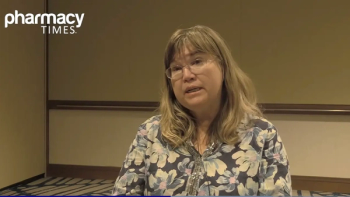
Streamlining Biosimilar Access: How EHR Automation Reduces Delays in Cancer Treatment
Key Takeaways
- EHR automation reduces biosimilar authorization turnaround from 12 to 4 days, aligning choices with insurance preferences.
- Mismatches between institutional and insurance-preferred biosimilars cause patient delays and step therapy requirements.
Sarah Hudson-Disalle, PharmD, highlights the significant impact of EHR automation on biosimilar access and costs.
In a Pharmacy Times® interview, Sarah Hudson-Disalle, PharmD, fellow of the Association of Cancer Care Centers (ACCC), and assistant director at James Cancer Hospital for Infusion Reimbursement Services, discussed the capabilities of EHR to automate biosimilar selection and access.
Pharmacy Times: What common barriers do patients experience regarding biosimilar selection and access?
Sarah Hudson-Disalle, PharmD: Biosimilars in the authorization process may be picked by the institution or the provider and not align with the biosimilar that is the insurance company's preferred payer. So many times, step therapy is required if you want to use biosimilar at your institution, but the payer wants you to use biosimilar B. And so, lots of times that can cause patient delays and that's probably the biggest barrier that we see as far as a patient delays or denials that delay that patient getting started, especially in cycle 1 day 1.
Pharmacy Times: Can you explain how the EHR can streamline the prior authorization process for biosimilars? What kind of time or resource savings have you observed with this automation?
Hudson-Disalle: In essence, we were able to see a decrease in our turnaround time from 12 days down to 4 days in in the process. Initially, we started with the reference product, and we're submitting that reference product to the insurance regardless of what the patient's insurance was, and we would end up with a denial. Then, go back to the treatment team. The treatment team would have to change the preferred agent. Then, a new submission would have to happen. And then we would get the authorization with the utilization of the advanced order group within the EHR. We effectively took out that middle. There's that very initial step. Had the advanced order group picked the biosimilar that was the preferred agent based on that patient's insurance, allowing both the provider and the prior authorization team to submit the medication that was preferred by the insurance, it would allow the patient to start in a timely fashion.
Pharmacy Times: What future developments do you foresee in the use of EHRs to manage biosimilar adoption and prior authorization processes?
Hudson-Disalle: We have already started using this application in other pharmaceutical classes. We've already instituted the use of IV replacement iron. We are looking at 505(b)(2) agents. We were looking at bortezomib (Velcade; Janssen Pharmaceutical Companies) and then actually CMS (Centers for Medicare & Medicaid Services) changed the J codes most recently. So, actually some of our optimization, we had to find another agent for that to happen. But then, also looking at agents like leuprolide (Eligard; Tolmar, Inc) that’s in our next area. And so, trying to figure out can deliver that preferred agent or the preferred step product to the provider without having to go through those duplicative steps is really important.
Newsletter
Stay informed on drug updates, treatment guidelines, and pharmacy practice trends—subscribe to Pharmacy Times for weekly clinical insights.






















































































































































































































